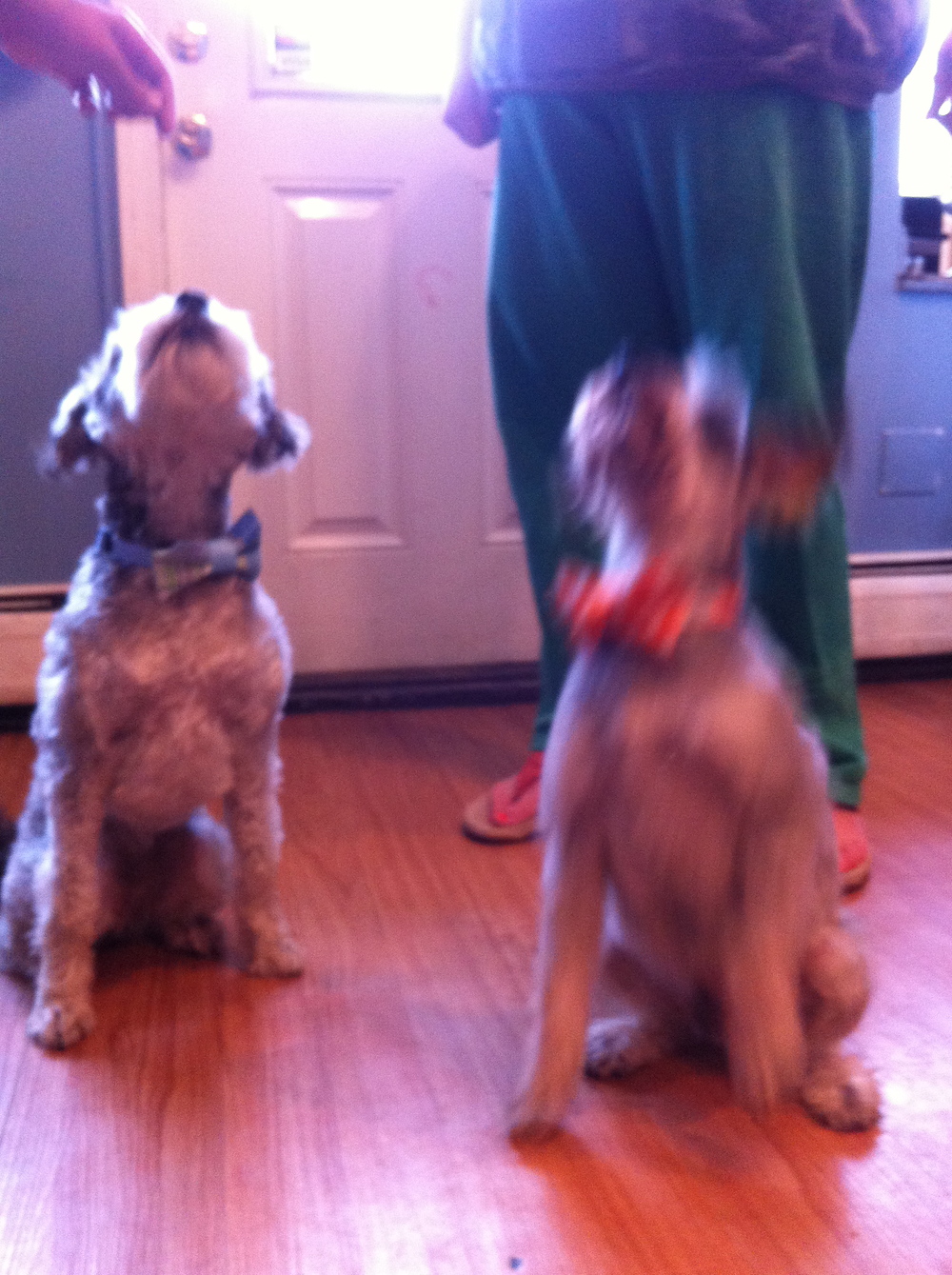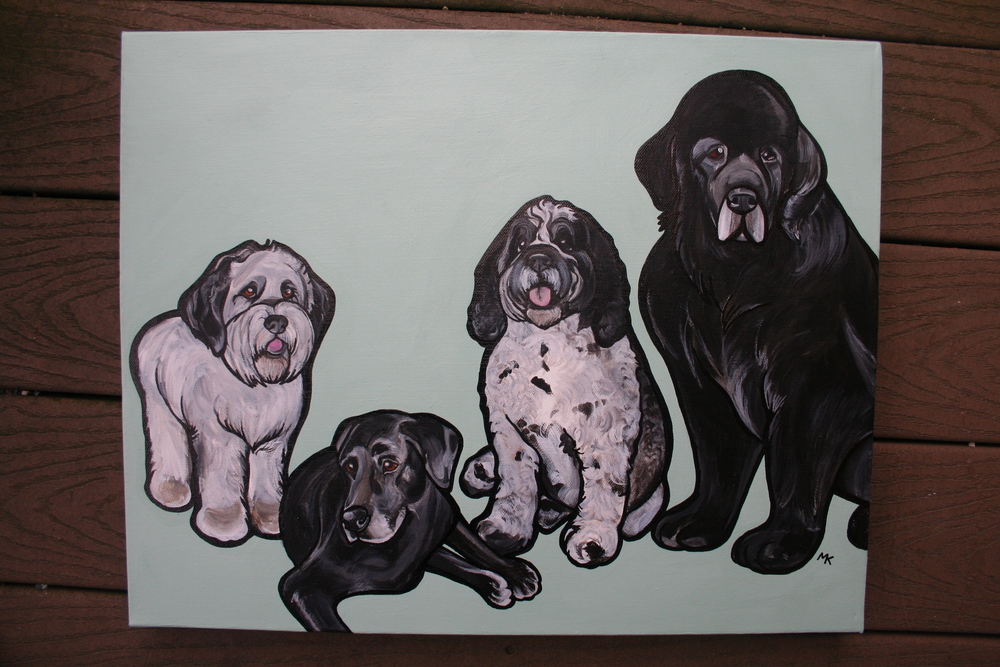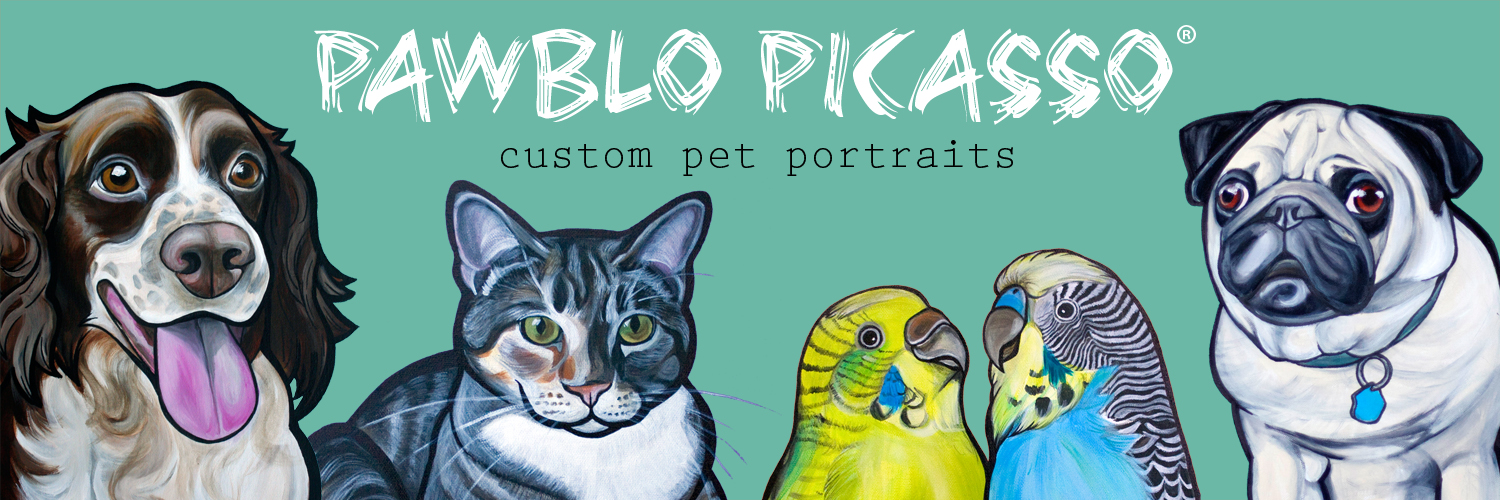This is not as easy as you may think! I figured that since I've explained this to so many people it may make sense to just share a list of pointers that I think will help to get a good photo and to explain better what I'm looking for in a photo. Smartphones these days are taking wonderful photos and they work perfectly fine for me.
1. Lighting
Lighting is especially important in your photos. If it's too dark you may be forced to use a flash and then the animal may have "red-eye" or a glare in their eyes. It is VERY hard for me to work from these types of photos. If the light is too bright then some of details may be lost and the shadows may be too extreme. The best solution is to find something in between. I usually recommend people take photos outdoors. The best type of light is when it is "diffused." You do not want direct sunlight so overcast days work the best. If there's an area (say, on a porch, or in a sunny room during the middle of the day) where there is plenty of light but the sun isn't shining directly into the room, this could work. So long as you don't have to use a flash! If you do end up taking the photo indoors, make sure the light is BEHIND YOU when you take the photo. If you try to take a photo of something with the light behind the animal, the animal will end up being very dark in the photo.
2. Metering an iPhone (lighting continued)
You may already know this but you may be about to learn a wonderful trick! This may work for other smartphones too but I'm not sure. When you're about to take a photo and you can see the image on your screen, you can actually tap anywhere on your screen to "meter" the camera. "Metering" is a term all photographers know, which means that the camera is actually measuring the amount of light that is coming in so it can adjust its shutter speed and aperture to make sure it takes in just the right amount of light for the photograph. When you're taking a picture of your pet, you should "meter" the camera by touching the screen on the middle to darkest color ON your pet. Try playing around with this and metering the camera on different parts of the screen to get an idea of how the camera meters. Any time you're taking a photo on your phone (not necessarily of your pet), tap on the middle to darkest color on the screen. Since you'er taking a photo of your pet in this instance and the lighting is only important on them, tap on them until you find the best amount of light to take the photo.
3. Getting the Pet to look at the Camera
This is definitely one of the trickiest parts of this process and also wholly dependent on your pet. I am still learning more about how to do this (I am most definitely not a professional pet photographer). Things that I have found to work is to maybe hold a treat or a toy near the camera to grab their attention. I have also read the suggestion of putting the animal on top of a table so that they cannot really go anywhere (if you're dealing with a cat this may not work). Try having someone stand behind you to get his or her attention... but this may also just make the animal want to run towards that person. I have also seen photos where an extra person gets on the floor with the animal while you try to take the photo. If you have any suggestions I'd love to hear them! Of course there is always the option of hiring a professional photographer to take your photos. I am more than happy to work from these photos!
 (treats are clearly more important to these dogs than looking into my camera).
(treats are clearly more important to these dogs than looking into my camera).
4. The type of photos I am looking for
This is hard to explain precisely, but I do recommend that you take a look through my galleries so that you get an idea about my style. I usually will only include an animal in a painting (sometimes I will put in a favorite toy). If the animal is leaning on a pillow, I will not include that pillow and it may look weird with their head just floating in the middle of the painting. This being said, really try to get a photo of the animal by themselves-- no props!
Depending on the size of the canvas and the size of your dog I may or may not be including more than his or her heads. 8x10 and smaller are usually just the faces unless it's a really small dog or you have specified that you would like the whole body.
The eyes are especially important. That's how I capture your pet's spirit and personality! I really like to see both eyes and it is absolutely essential that there is no glare in the eyes from a flash (see above section on lighting).
This applies to people who are pretty experienced in photography. I really need to see all of the details in the whole body (no blurriness). When you're messing with depth of field please consider this and use a smaller aperture if you can.
My favorite photos are of dogs sitting and looking directly at you. Any angles work but my favorite photos tend to be the ones where you are looking more directly at the dog as opposed to aiming down on the pet so that I can make the painting look like the animal is standing on the bottom of the canvas.
5. Taking photos with multiple animals
If you think taking a photo of one animal is hard try doing it with two or three or four! There isn't too much I can advise you to do that you wouldn't already know. You know your animals better than me! However, if you can't get a good photo of them together, try taking multiple photos of them in the same position and if some of the photos have at least one of them looking at the camera I can usually peice them together. It's just really important to have photos of them together to see their relative size. I may even be able to take the head from another good photo you have and place it onto a body of a photo that you had with the animals together.
To put animals together that never actually lived at the same time it can get a little tricky. I may have to go off of your advice to get an idea of their relative sizes. The most important thing is that the photos will all have to have been taken at a very similar angle so that it will look like the animals are all sitting on the same surface.
 This was a tricky painting... These dogs were not all alive at the same time, but now they all get to hang out for the first time in this painting! How cool!
This was a tricky painting... These dogs were not all alive at the same time, but now they all get to hang out for the first time in this painting! How cool!
